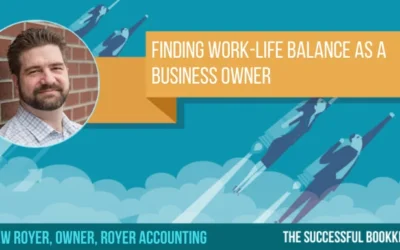Cash flow refers to the cash and cash equivalents transferred in and out of a business.
A positive cash flow shows that a business is adding more cash into its reserves so they can reinvest, pay their shareholders, and settle their debts.
In some businesses, however, owners encounter challenges in this area. Usually, cash flow problems arise when companies struggle in paying their debts as they become due. To prevent these issues, let’s understand its major causes.
What Are the Leading Causes of Cash Flow Problems?
Businesses with cash flow problems usually over-invest. They make the mistake of spending too much on production essentials, such as factory equipment and supplies. When these investments fail to generate revenues, a company will experience cash flow problems.
Late payers and slow-paying clients are also one of the main causes of cash flow problem. This strains the budget of businessmen to pay their dues and reinvest on assets.
The third reason would be over-trading. This happens when a business expands quickly without assessing if their new retail chain is generating profits. In this case, you should know how to avoid cash flow problems by consulting financial experts who can help assess if your retail chain can generate profit for you.
Can a Profitable Business Have Cash Flow Problems?
One in ten businesses fails because of the direct results of cash flow problems. And, this is not limited to small businesses. Cash flow statement problems can also affect multinational corporations. This is why business owners and entrepreneurs should be cautious when and where they spend their money.
Main Reason Why a Company Will Have a Negative Cash Flow
As previously implied, a negative cash flow occurs when a company spends more than they can generate. Without intervention, cash flow problems could kill a profitable company because it will no longer have sufficient money to cover its expenses.
How Cash Flow Problems Lead to Business Failure
Cash flow problems cause interruptions to business operations. Although they are unavoidable, a business owner needs to solve these issues before they affect their financial position. Otherwise, they will not be able to release funds for their bills, liabilities, overhead expenses, and operating expenses.
Home Depot 1985 Case Study
An example of cash flow problems that can negatively affect the growth of a company is the one in the Home Depot 1985 Case Study. During the said year, the company was on the brink of bankruptcy due to poor cash flow. In one occasion, they spent $12 million a month with a cash reserve of only $9 million.
The reason for their cash flow problem is their quick expansion and addition of assets. Plus, their sales were not keeping up with the investments they made. This reduced their profitability, leading to a substantial decline in their return on investment (ROI).
Ways to Solve Company Cash Flow Problems
The experience of Home Depot in 1985 warns us to manage our cash flow problems as early as possible. For the best solutions to cash flow problems, here are some tips to keep in mind:
1. Access a flexible line of credit
Line of credit (LOC) refers to the borrowing limit of your company. You are allowed to take specific amounts of money at certain points in time, but as your credit reaches its limit, you need to pay your debt so you can borrow again.
A more flexible LOC helps your business borrow more from a financial institution. This enables you to sufficiently finance your company’s needs while easing your assets into paying your debt.
2. Audit your finances
An audit is an in-depth investigation of your financial activity. It is keeping a close eye on your expenses, purchases, and financial records. This is a brilliant method to help you set your finances in the right direction.
3. Create cash flow forecasts
You need to have a report that projects your future income and expenses. Creating cash flow forecasts helps you plan and prepare your future financial position to avoid a negative cash flow.
4. Negotiate favourable credit terms with your suppliers
Suppliers who allow extension of due dates for at least one month will give you enough time to earn and ease your cash flow into paying your debts. With favourable credit terms, you can adjust your finances to cater to other expenses while having enough to pay your liabilities.
5. Prioritise credit control
Since one of the reasons for cash flow problems is client credit, you need to apply credit control, which is the process of reducing the time between supplying your clients and getting paid. Never let your customers pay way past due dates. Regularly check your ledger and contact clients whose payables are nearly due.
5. Invoice quickly and accurately
Pay attention to every detail when sending invoices. If possible, use invoicing software or offer a payment portal to eliminate discrepancies that could lead to cash flow problems. With such solutions, you can easily track payment issues and determine proper interventions to apply if needed.
6. Continue making new marketing and business developments
Continuous business development helps you achieve higher ROIs. This involves continuous innovation on your processes to achieve accuracy, improve your products, and optimise service quality to increase customer satisfaction and sales.
7. Have an organised accounting system in place
An organised accounting system helps auditors make an accurate decision on improving processes and financial output. It allows them to assess reports clearly to better help your company adjust its financial position.
8. Free up assets
To free up assets means to liquidate or convert assets into cash or cash equivalents. This is used by many businesspeople in overcoming cash flow problems. Having funds available to finance operating expenses, liabilities, and investments is important.
9. Consult a company rescue specialist
Company rescue specialists, like Royer Accounting, offer strategic techniques for dealing with cash flow problems. These individuals can help you avoid bankruptcy by resolving financial issues within your business. If you are experiencing these problems, you should seek their guidance as soon as possible before it’s too late.
Financial problems affect the profitability and growth of a company. Learn from the experience of Home Depot in 1985 and avoid committing the same mistakes to maintain a positive cash flow. If your assessment shows you need financial help, contact specialists to help you get back on track. With persistence and continuous improvements, you can upscale your company and keep a steady pace towards ultimate success.



